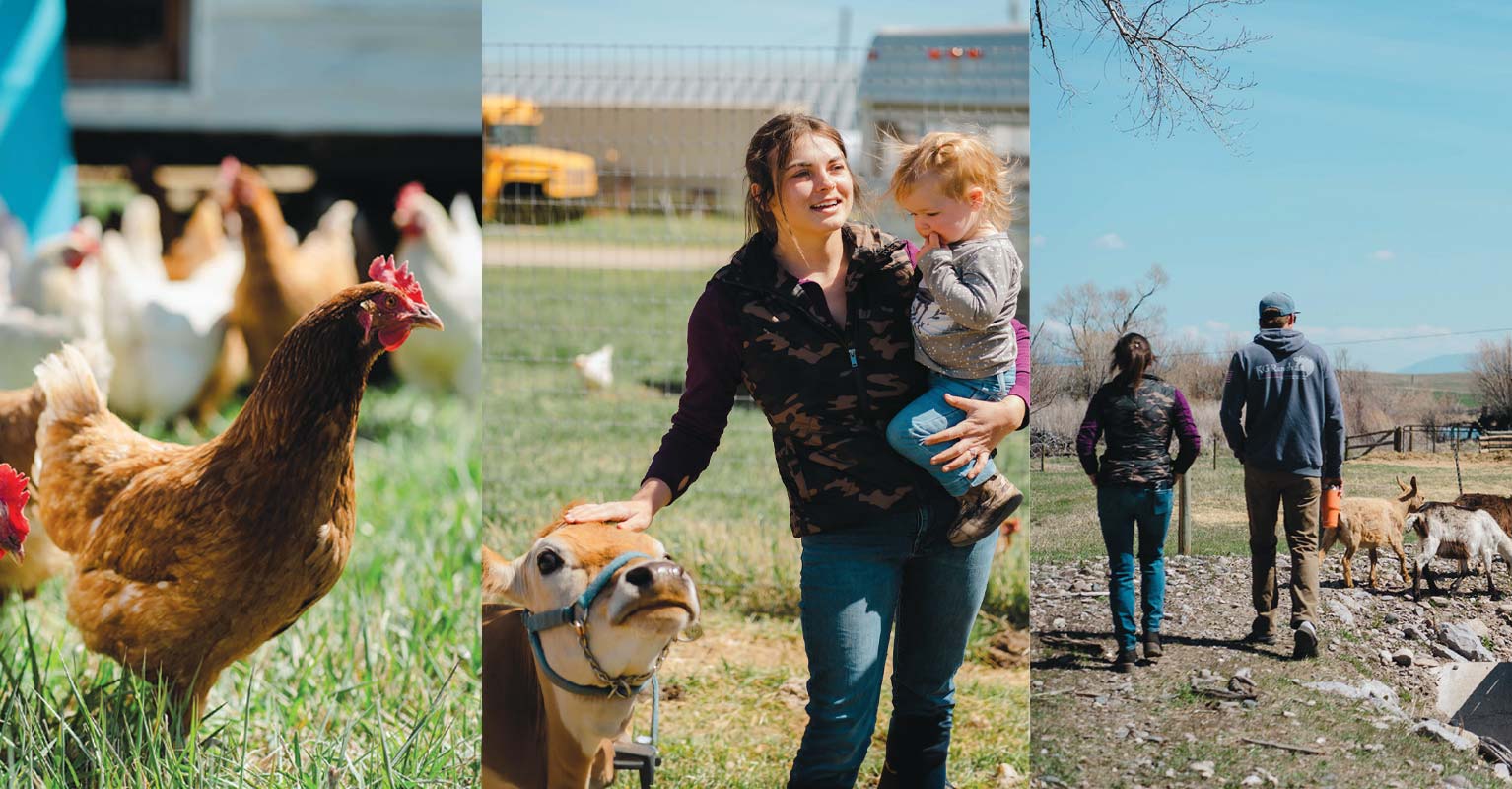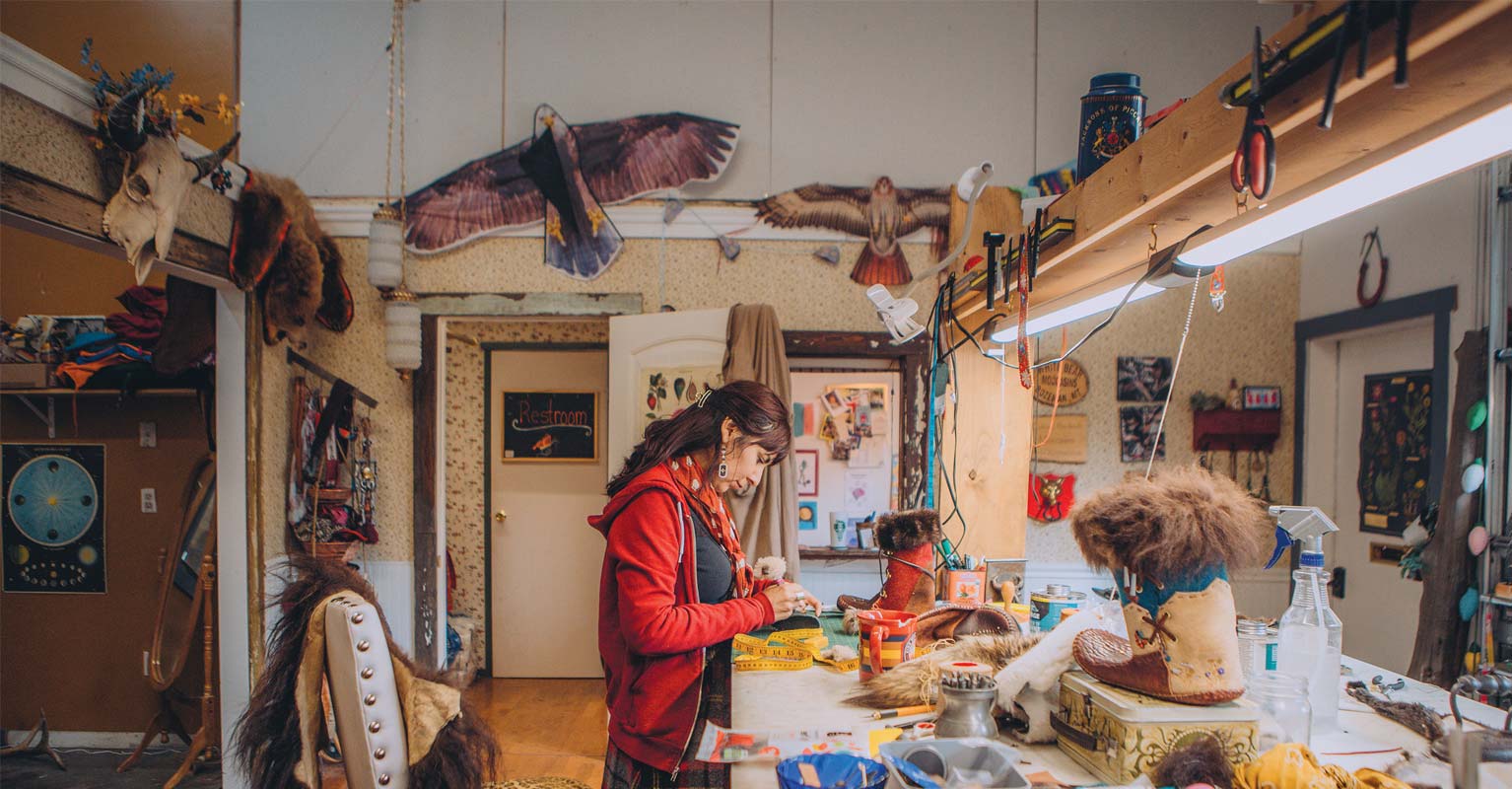The shop where Nic Bryce makes all the charcuterie for his business Grotto Meats doesn’t look like you would expect it to. It’s not cold and sterile, and it feels nothing like a meat-processing plant. Instead, Bryce’s shop is curious and welcoming, like the inside of an artist’s brain caught mid-thought.
The tiny shop is clean, cramped, and cluttered with spices and spreadsheets. Bryce’s head almost brushes the ceiling. His ten-year-old son, Herbie, snacks on charcuterie while he meanders around the Grotto Meats shop in a white apron; he says he wants to be a charcutier like his dad when he’s older. Jazz music plays poshly in the background and in that space you can tell Bryce’s product is more than just cured meat: It’s artwork.
Charcuterie is the French word used to describe meats that have been preserved without being cooked. It’s a relatively science-heavy process that involves curing salts, molds, and fermentation, as well as monitoring pH balances, temperature, and humidity. The process is a long one. Products like sausage take about four weeks in the curing chamber, while other meats like capicola take about eight months.
But “the science isn’t what makes it taste good,” Bryce says. The flavor comes from the artist and the ingredients.
Bryce was raised in Lynden, Washington, a small agricultural town in Whatcom County where more raspberries are produced than any other county in the nation. His appreciation for local food started in Lynden, but it didn’t end there. Now the father of five kids and the owner of two businesses, a lot of his time is spent sourcing local ingredients. When he first started taking his food truck, Rendezvous, to farmers markets, he used to go early and shop the market for all the fresh produce he would need that night.
“It just makes sense to eat the food around you,” Bryce says.
Bryce’s shop is curious and welcoming, like the inside of an artist’s brain caught mid-thought.
Bryce buys all of his pork from the Hutterite community in Cascade because he believes that buying meat from local producers helps sustain the culture of the agricultural industry in Montana. He uses local honey, Wildrye Distillery bourbon, and Flathead cherries. He takes Montana ingredients and creates masterpieces, like a pork loin crusted in Ghost Town Coffee Roasters coffee, which is then rinsed off in red wine. Grotto Meats started as a passion project for Bryce; he was a chef for a long time and he’s curious about everything food. He was a young teen when he started working in kitchens.
At one of his first jobs, Bryce was given a 50-pound box of onions to cut and remembers thinking while tears streamed down his face: “I can’t believe I’m getting paid for this.” Like there was nowhere he’d rather have been than getting paid less than six dollars an hour to cry over a pile of onions. Curing meat is a tedious process and not everyone is cut out for it. Luckily, Bryce has never been drawn to the easy way of doing things. “The process is painstaking, but it’s a passion,” he says.
He prioritizes quality over convenience. Most charcuterie producers grind their pork twice to achieve a pleasant texture while making use of the less-desirable bits of tissue—it’s the stuff that gets stuck in your teeth when you eat lesser-quality charcuterie. But Bryce makes his cured meat differently. He hand-trims all of the connective tissue out of the pork, which means he only needs to grind it once to achieve a smooth and clean texture. It’s a process called seam butchery, and Bryce says it’s what takes all his time.
Cory Dragone, executive chef at Blacksmith Italian in Bozeman, offers a Grotto Meats charcuterie board on his menu. As a chef, Dragone appreciates Bryce’s dedication to quality and his love for food. “If [Bryce] cuts into his capicola and there’s a spot in it he doesn’t like, he’s not going to serve it to me,” Dragone says.
He is glad that Bryce can guarantee product to his restaurant because he knows the charcutier’s inventory is scarce and sought after. “I know what [Bryce] is getting out of it—you don’t get rich by making this stuff ,” Dragone says. “He’s a local artisan making charcuterie with love.”




